

David Watkins is a British artist who has designed the medals for the London 2012 Olympics. [1] Watkins was also a special effects maker for the film 2001: A Space Odyssey . [2]


David Watkins is a British artist who has designed the medals for the London 2012 Olympics. [1] Watkins was also a special effects maker for the film 2001: A Space Odyssey . [2]
Watkins was born in Wolverhampton in 1940 and he is a graduate of the University of Reading (1963 Fine Arts) where he met his lifelong partner Wendy Ramshaw. [3]
Ramshaw is a Royal Designer for Industry and he has produced work for the Metropolitan Museum in New York and the National Museum of Modern Art in Tokyo. [4]
National Life Stories conducted an oral history interview (C960/74) with Watkins in 2006 for its Crafts Lives collection held by the British Library. [5] In 2009 Graham Hughes wrote a joint biography of Watkins and his wife and fellow designer Wendy Ramshaw. [6]
In 2010 a retrospective exhibition of his work was held at the Victoria & Albert Museum, London, titled Artist in Jewellery, a Retrospective View (1972–2010). [7]
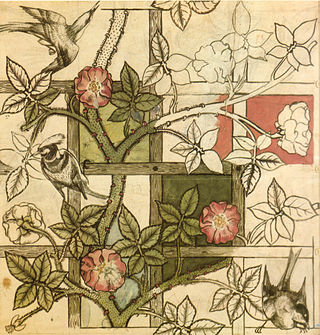
The Arts and Crafts movement was an international trend in the decorative and fine arts that developed earliest and most fully in the British Isles and subsequently spread across the British Empire and to the rest of Europe and America.
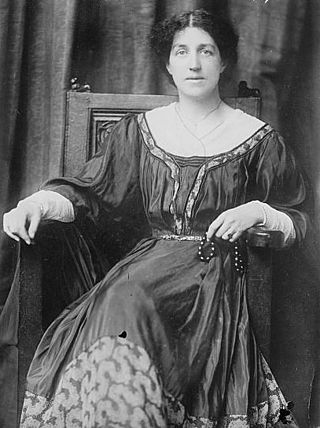
Mary "May" Morris was an English artisan, embroidery designer, jeweller, socialist, and editor. She was the younger daughter of the Pre-Raphaelite artist and designer William Morris and his wife and artists' model, Jane Morris.
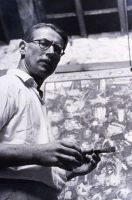
Alfred George Janes was a Welsh artist, who worked in Swansea and Croydon. He experimented with many forms, but is best known for his meticulous still lifes and portraits.
London Design Festival is a citywide cultural event that takes place over nine days every September across London. It was founded by John Sorrell and Ben Evans in 2003 and celebrated its 22nd edition in September 2024. In an article by Wallpaper, the festival chairman stated, "We consciously founded the London Design Festival to be public-spirited. Over the last 20 years, the Festival has had incredible depth of penetration and success in bringing people together and distilling new ideas."
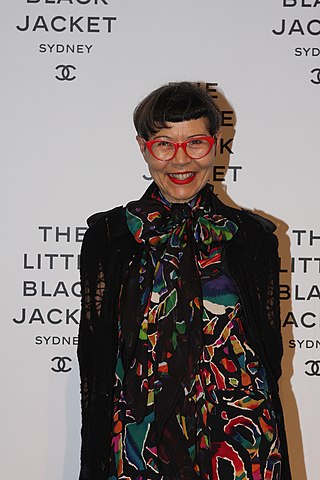
Jenny Margaret Kee, is an Australian fashion designer.
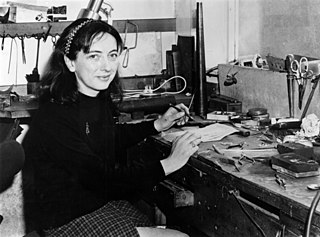
Ola Gorie is a Scottish jewellery designer and one of the founders of the modern craft movement in Scotland.

Elizabeth Fritsch CBE is a British studio potter and ceramic artist born into a Welsh family in Whitchurch on the Shropshire border. Her innovative hand built and painted pots are often influenced by ideas from music, painting, literature, landscape and architecture.

Birmingham has a distinctive culture of art and design that emerged in the 1750s, driven by the historic importance of the applied arts to the city's manufacturing economy. While other early industrial towns such as Manchester and Bradford were based on the manufacture of bulk commodities such as cotton and wool, Birmingham's economy from the 18th century onwards was built on the production of finished manufactured goods for European luxury markets. The sale of these products was dependent on high-quality design, and this resulted in the early growth of an extensive infrastructure for the education of artists and designers and for exhibiting their works, and placed Birmingham at the heart of debate about the role of the visual arts in the emerging industrial society.

Vanley Burke is a British Jamaican photographer and artist. His photographs capture experiences of his community's arrival in Britain, the different landscapes and cultures he encountered, the different ways of survival and experiences of the wider African-Caribbean community.
The year 2012 in art involved various significant events.

Dovecot Studios or Dovecot is a tapestry studio and arts venue in Edinburgh, Scotland.
Peter Tully (1947-1992), was a jeweller, designer and artistic director, notable for his influence on jewellery design in Australia through the utilisation of found and non-precious materials, as well as his artistic direction of the Sydney Mardi Gras (1982-1986).

John Paul Miller was an American jewellery designer and goldsmith, who also produced films, photographs and paintings. Stephen Harrison, decorative arts curator at the Cleveland Museum of Art, compares Miller's work with that of René Lalique and Louis Comfort Tiffany.

Shaun Leane is a British jewellery designer best known for his sculptural pieces created for Alexander McQueen. His eponymous jewellery brand is a four-time winner of the UK Jewellery Designer of the Year award.

Mabel Pakenham-Walsh was a British painter, sculptor and designer, and pioneering female artist in post-war European figurative art. She worked in many mediums, but is particularly well known for her colourful wooden relief sculptures. Her work was significantly influenced by primitive and outsider art, and created primarily from recycled materials, earning her recognition as an early eco artist.

Suffrage jewellery refers to jewellery worn by suffragists, including suffragettes, in the years immediately preceding the First World War, ranging from the homemade to the mass-produced to fine, one-off Arts and Crafts pieces. Its primary purpose was to demonstrate its wearer's allegiance to the cause of women's suffrage in the UK. Jewellery was a key mechanism used by British suffragists to identify themselves.
Wendy Anne Jopling Ramshaw was a British ceramicist, jeweller and sculptor. Her signature ringsets are in 70 public collections in both museums and art galleries.
Azza Fahmy is an Egyptian jewellery designer, and the founder of the design house Azza Fahmy Jewellery. Fahmy was the first woman to train in Egypt's jewellery quarter, Khan El Khalili. In 2013 Fahmy founded ‘The Design Studio by Azza Fahmy’, in partnership with Alchimia, Contemporary Design School in Florence.
The British Art Medal Society (BAMS) was founded in 1982 to promote the art of the medal through commissions, exhibitions, publications and events. The society is affiliated to FIDEM.
Joan Mary Crossley-Holland was an English gallery owner and potter. Educated at the Central School of Arts and Crafts, she began a career in pottery at Royal Doulton. She took a break from work to raise her children. Therefore, Crossley-Holland was employed as a personal assistant to the Maharana of Mewar at the Lake Palace Hotel for a year. She was appointed director of Oxford's Bear Lane Gallery in 1966 but left to establish the independent Oxford Gallery in 1968 after disagreements with trustees over whether pottery was considered art. Crossley-Holland oversaw 186 exhibitions from artists by the time she retired in 1986.